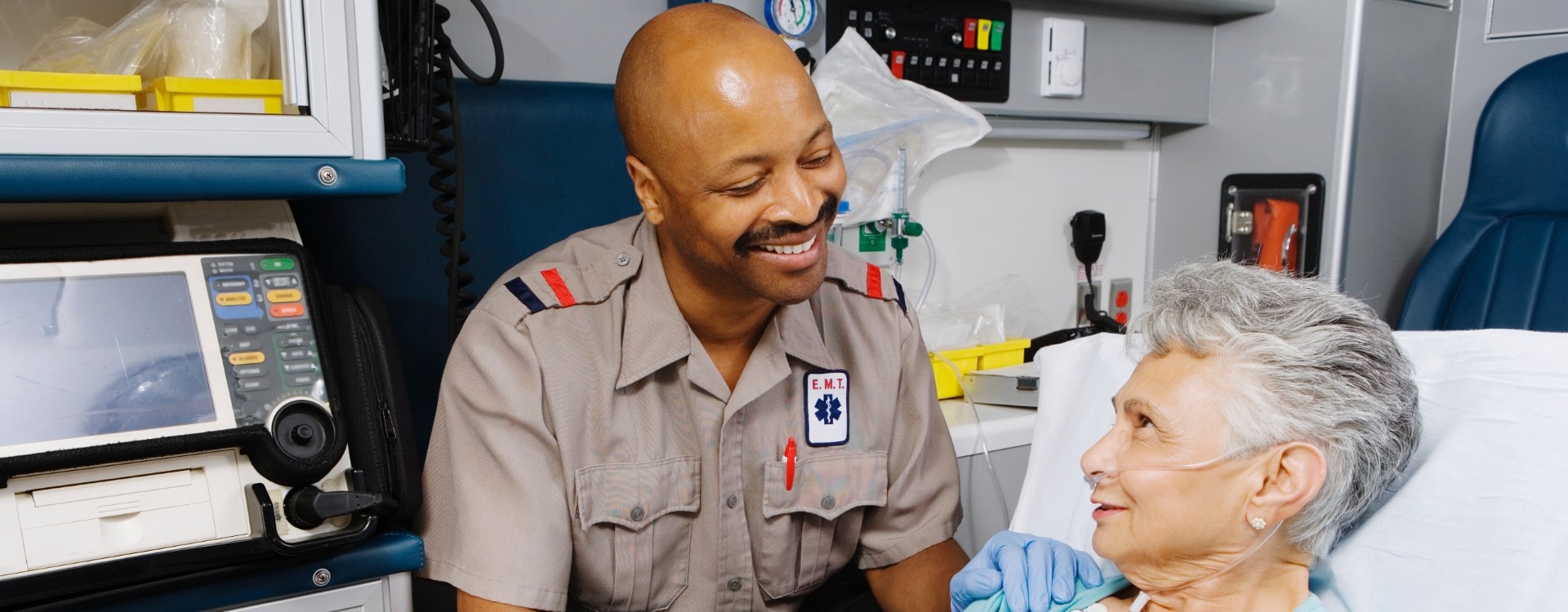6 Light-Weight Tools EMTs Should Carry with Them
 As a new member of the EMT community, you’ll probably find yourself asking this question, “What EMT equipment do I need to carry with me on the job?” The items that you have on your person as an EMT can make a big difference in your confidence and level of patient care.
As a new member of the EMT community, you’ll probably find yourself asking this question, “What EMT equipment do I need to carry with me on the job?” The items that you have on your person as an EMT can make a big difference in your confidence and level of patient care.
The list of items that you could try to shove and store in your pockets is long, but carrying too many items can slow you down or inhibit your ability to perform in an emergency situation. The good news is that all of the essential equipment should be in your ambulance or truck.
Here are a few other tools you may consider having with you during your EMT shift.
A Change of Clothes
When you’re working with patients, things can get messy. It’s a good idea to have an extra set of clothing, including socks, underwear, pants, and a shirt on hand in case you need to change. Keep these items in a small bag that you can easily shove under your seat in the truck.
A Small Flashlight
It can be helpful to have a small flashlight in your pocket for when you need more visibility. You may be issued a light from your department, but having a small flashlight handy on a keychain or around your neck is helpful during stressful situations.
Look for a light that is bright and lightweight. Your flashlight shouldn’t weigh you down, but try to find the brightest option you can.
Multi-Tool
The typical multi-tool gives you easy access to a variety of basic tools that may come in handy in an emergency situation. Most contain a knife, pliers, screwdriver, tweezers, scissors, a small saw, and a chisel. Specialty tools will contain even more elements. Be sure to always follow safety protocols and use clean, sanitized tools while caring for your patients.
Sharpie
You never know when you’ll need to mark something—or someone—and need to be secure in the fact that your notes won’t disappear, especially in mass casualty incidents when multiple providers might be present. A simple black sharpie can save lives. It allows you to ensure essential medical information isn’t lost as a patient is shuffled between responders and medical personnel.
A Stethoscope
Many EMTs have strong opinions on which stethoscopes are the best. But before you get caught up in the debate, keep this guiding principle in mind: Your stethoscope should allow you to do your job to the fullest. The cheapest scope on the market is most likely not the best choice. However, you also might not want to get the most expensive stethoscope on the market since it is likely to get lost or damaged in the field. If you do decide to purchase an expensive scope, be sure to keep it close.
EMT Guide Book
An EMT guide book is a quick reference of important information, like best practices and protocols for your area. It may contain a list of common ailments and the subsequent treatments. You can make your own guide book, download one from the internet, or purchase one from a publisher. You may also be issued a guide book specific to your department. Carry it in your bag and review it often so that you can act with confidence when the time comes.
Getting Equipment Funding
Your department will typically have a city, county, or private-institution-issued budget for equipment and supplies. Still, many departments can find themselves underfunded or want to pursue additional funding for new technology or specialty equipment.
There are a variety of grants for first responders offered by government and private institutions. For example, in 2018 the U.S. Congress passed the Siren Act, which provides funding to emergency healthcare providers working in rural communities who may have insufficient budgets.
The best tool to have on hand during an emergency is your knowledge. As you budget for personal equipment, don’t forget to set funds aside for EMS online education. An EMS refresher course will sharpen your skills and build your confidence as you help your patients.
Sources:
- First-time EMT-B carry on gear. Emtcity.com. Sept 28, 2011. https://www.emtcity.com/topic/20753-first-time-emt-b-carry-on-gear/.
- Grants resources. Homeland Security. Accessed on Apr 27, 2020. https://www.dhs.gov/science-and-technology/frg-grants.
- Stethoscope–The mega thread. EMTLIFE. Dec 23, 2007. https://emtlife.com/threads/stethoscope-the-mega-thread.5940/.
- The Siren Act and EMS grants for emergency medical equipment. EMSGrantsHelp.com. Apr 16, 2019. https://www.emsgrantshelp.com/news/the-siren-act-and-ems-grants-for-emergency-medical-equipment-eM15xW5BW2W7aUeC/.
- What flashlight do you carry? EMTLIFE. Jun 22, 2014. https://emtlife.com/threads/what-flashlight-do-you-carry.38742/.



